During the spring and summer, you can see beautiful smatterings of colorful wildflowers in the most unexpected places. Popping up on the edges of woodlands, lining streambanks, and blanketing empty fields and roadsides. While it’s generally assumed they almost grow like weeds, the truth is that wildflowers occur naturally worldwide and play critical roles in their ecosystems.
Unfortunately, more and more wildflower species are being lost to urban development and agricultural land clearing. But as landowners, we can play our part and plant wildflowers to beautify our gardens, fields, and ditch banks while helping the planet.
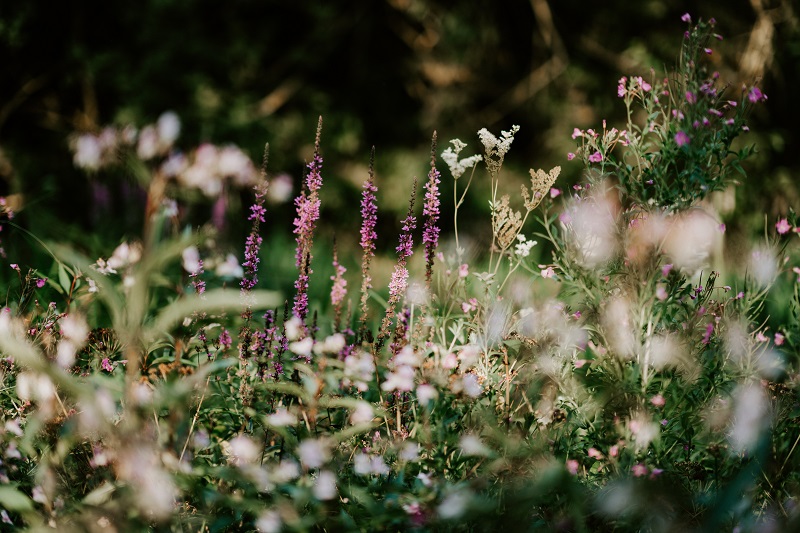
Photo credit: Annie Spratt on Unsplash
What Are the Benefits of Planting Wildflowers?
Sure, wildflowers bring a beautiful burst of color to the landscape when they bloom, but introducing them to your land also has many other important benefits.
- Wildflowers are considered native plants, which means they have developed over hundreds or thousands of years to become a balanced part of a particular ecosystem or region. Because of this, they have adapted to regional temperatures, humidity levels, and rainfall amounts, so they are conditioned to grow in that specific area.
- They are often known for growing in poor soils that lack nutrients. Hence, we commonly see them thriving along highways and ditch banks, where little other vegetation grows.
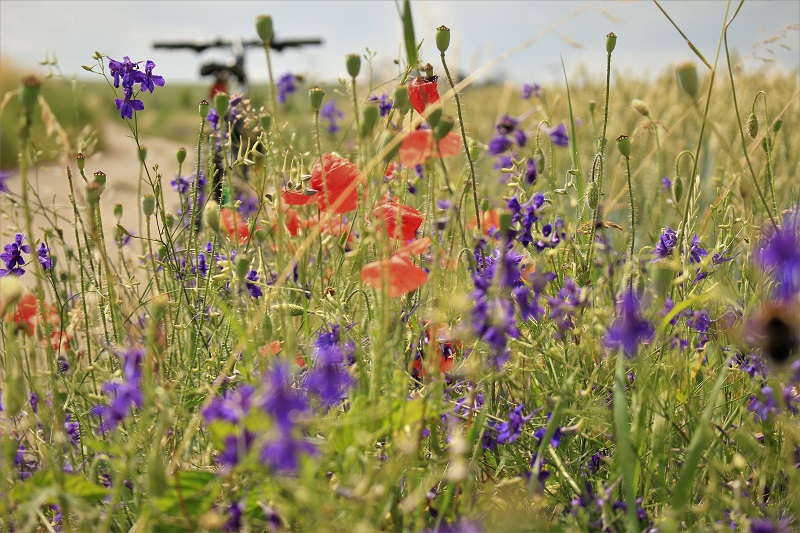
Photo credit: Lucie Hošová on Unsplash
- Their adaptation to local climates and poor soils means they require far less water and fertilizer than cultivated plants. These lower requirements make them easier to grow because they are low-maintenance, but their sustainability also makes them invaluable in areas where water resources are limited.
- Compared to cultivated ornamental plants, they are relatively free of disease problems and insect pests, minimizing the need for chemical pesticides and fungicides. A decreased use of these agri-chemicals keeps them from harming beneficial insect populations and reduces environmental contamination.
- Wildflower stands provide critical food sources and habitats for pollinators, beneficial insects, and wildlife. Many butterflies, including the endangered monarch, rely heavily on native plants as host plants, and populations are declining as habitat is lost to development and invasive species.
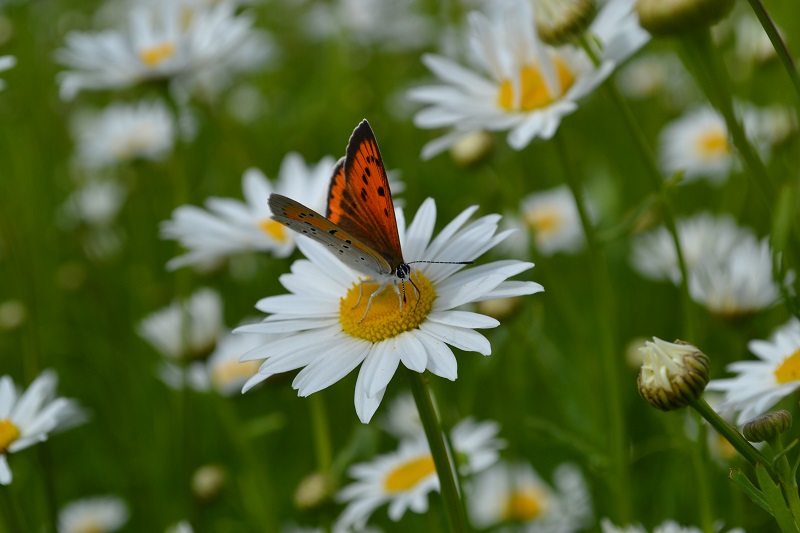
Photo credit: Eugene Mykulyak on Unsplash
- Mixed wildflower plantings help to support bee populations. Bee populations are declining worldwide because of excessive use of pesticides, higher temperatures associated with climate change, and intensive agricultural mono-cropping.
- Since wildflowers are incredibly adept at growing in areas others may not survive, they are useful in helping prevent soil erosion. Many wildflowers have extensive root systems that grow many feet deep in the soil, creating a fibrous underground network that holds slopes in place.
- Beyond attracting beneficial insects, including bees and butterflies, wildflowers also help protect the biodiversity of plants and animals within regional ecosystems. Intense agricultural operations have resulted in the clearing of land and degradation of animal populations, leading to what is known as genetic erosion. Wildflower plantings provide much-needed food and habitat, supporting declining wild animal populations.
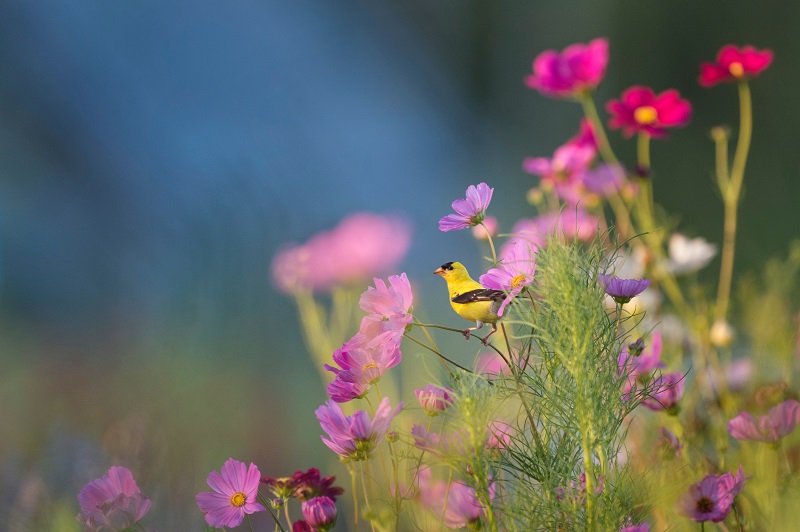
Photo credit: Ray Hennessy on Unsplash
- Wildflowers improve the air we breathe and help remediate soil, two of the earth’s most precious resources. During photosynthesis, they filter harmful pollutants from the air and pull toxins from the ground when their roots take in water and nutrients.
- Reduces pressure on over-grazed meadows by providing alternative grazing sources. Because they tend to grow taller than many types of grass, animals consume the tops of the wildflower plants, allowing the shorter grasses to regenerate.
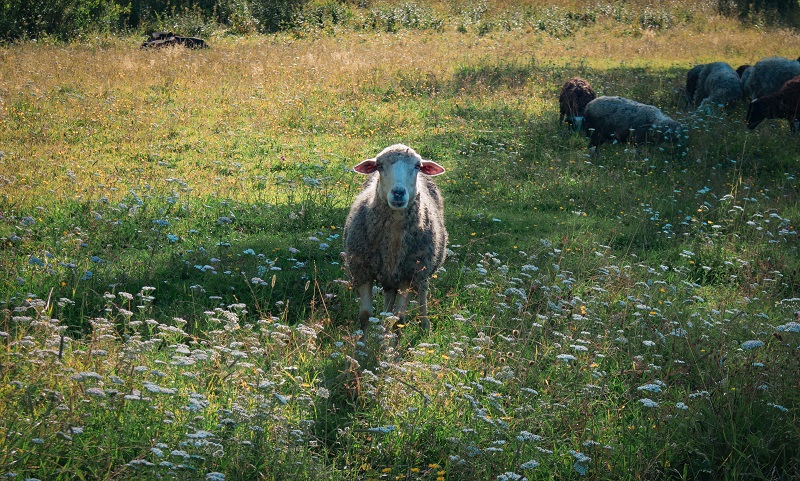 Photo credit: Ната Рута on Unsplash
Photo credit: Ната Рута on Unsplash
- Attracting pollinators to an area improves yields of crops, homestead gardens, and small food plots. Pollinators are essential to our global food source, with about one-third of all food plants relying on pollinators for reproduction.
Creative Spaces for Wildflower Plantings
When it comes to where you plant wildflowers on your land, your options aren’t limited to flowerbeds, your garden, or pasture areas. You can pretty much plant them wherever you’d like to grow them, but if you are interested in something different, here are some creative and useful ideas.
Keep in mind that wildflowers grow best in a spot where they receive six to eight hours of bright sun every day.
- Wildflowers are perfect for planting in rocky outcrops in your yard, on your property, or in other spots where the soil isn’t fertile or friable enough to grow ornamental plants.
- Sloped areas in your yard that are too steep for grass—such as hillsides above retaining walls—to minimize soil erosion and runoff.
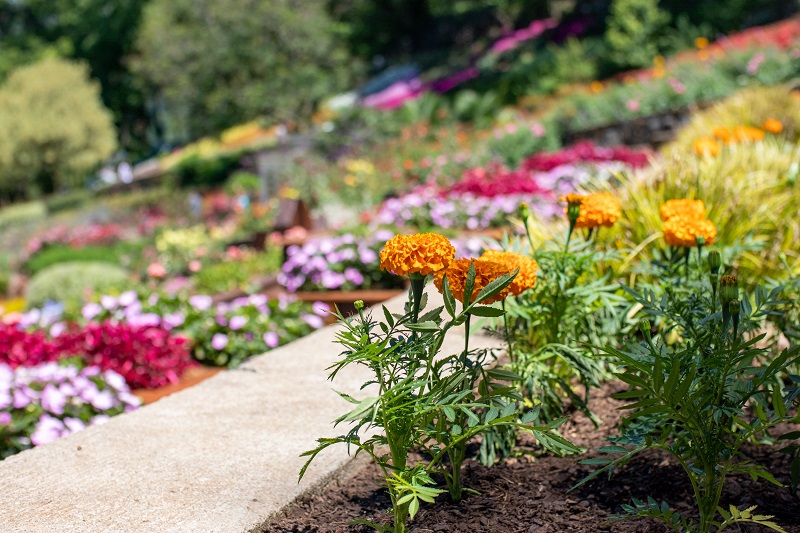 Photo credit: Vitor Paladini on Unsplash
Photo credit: Vitor Paladini on Unsplash
- You can use patches of wildflowers to hide eyesores, such as gas meters, utility boxes, or air conditioning units. Tall plants will camouflage these items but still allow easy access when needed.
- Plant a row of wildflowers to create a barrier between your yard and the neighbor’s, hide a fence you don’t like, or use them to create a living privacy screen.
- For rental properties where you can’t work the ground to create a garden space, you can plant wildflowers in large containers, build (moveable) raised beds, or use large containers like cattle watering troughs.
- If you’re tired of watering, fertilizing, and cutting your lawn, you can turn it into a wildflower meadow instead of growing grass.
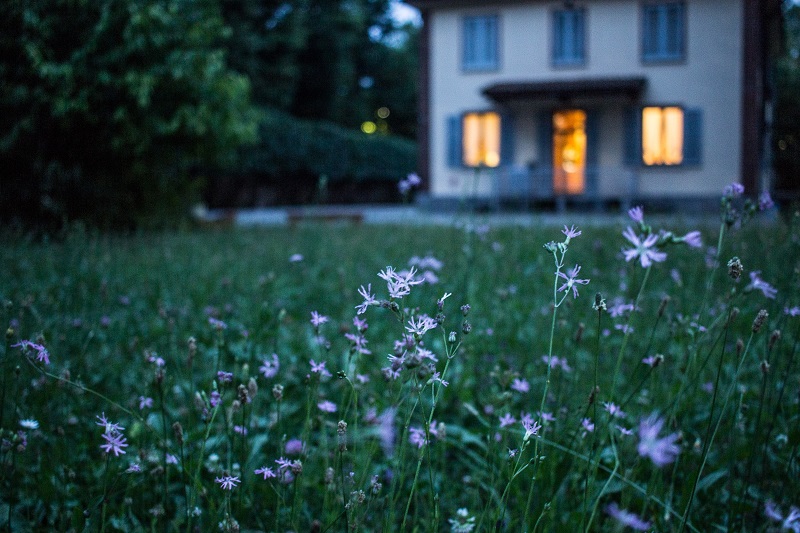
Photo credit: Valentina Locatelli on Unsplash
How to Plant Wildflowers
Wildflowers are easy seeds to sow, especially if covering large areas like a lawn or meadow. They don’t need the ground to be worked extensively before planting, nor do they need you to meticulously place plants since they are meant to look like something that would occur naturally.

Photo credit: Photo by Leslie Bowman on Unsplash
You'll already know the general steps if you have ever sown garden seeds or overseeded your lawn.
1. Determine the best time in your area for planting wildflowers.
Seeds can be planted in spring or fall, although spring is recommended. In cold climates, wait until the threat of frost has passed. For all areas, wait until your soil temperatures are 55°F or warmer, keeping in mind that in spring, the air temperatures warm before the soil does. Don’t make the mistake of sowing when the air is warm enough but the ground isn’t.
2. Remove all existing vegetation and debris from the planting bed.
Seeds germinate better when planted in a spot where taller plants don’t shade them out, and they aren’t competing for resources like water and nutrients. Vigorous seedlings are also better suited to outcompete weeds and grasses that may try to sprout up.
3. Loosen the top few inches of soil.
This step is optional, but using a garden rake or tiller to break up the top layer of soil will help your seedlings take off and thrive. Loosened soil is easier for the new roots to grow down into, and plants can conserve energy for growth.
4. Combine the seeds with sand to create a 1:8 mixture.
Add about eight parts of sand to a bucket for every part seed and mix them well. Creating this mixture helps you spread the seeds more evenly, and the sand’s light color lets you see where you’ve already sown seeds on the soil.
5. Scatter the wildflower seeds over the ground.
After mixing, split your seed/sand blend into two equal portions. Using the first half, sow it as evenly as possible (following the recommended coverage rate), walking back and forth across your site from north to south. With the second half, similarly sow seeds, walking in a perpendicular pattern.
6. Compress seeds into the top of the soil.
In most cases, you don’t want to bury or cover your wildflower seeds, but you do want to press them gently into the soil. You can walk across the patch or use a seed roller for larger areas. If you are seeding a slope or an area with strong winds, you may want to cover the soil with straw to keep the seeds in place.
7. Keep the soil moist but not soaking wet.
Since your seeds are not buried under the soil surface, they are constantly exposed to the sun and need to stay hydrated. Maintain good soil moisture until plants are 4-6” tall and their roots can access enough water in the ground.
Some of the Best Wildflowers to Plant
There are roughly 32,000 different flowering plants that grow wild north of the Rio Grande in North America. Every state in the US has varying species that thrive because of local climates and terrain, so your area may have specific plants better suited than others.
The following are a few of the most common wildflowers grown across the country.
- Purple coneflower
- Zinnia
- Shasta daisy
- Marigolds
- Blanketflower
- Painted trillium
- Sunflower
- Black-eyed Susan
- Morning glories
- Cardinal flower
- Lance leaf coreopsis
- Cosmos
- Aster
- Wild blue flax
- Long spurred violet
- Butterfly milkweed
- Texas bluebonnet
- Candytuft
- Eastern red columbine
- Blazing star
- Mexican hat
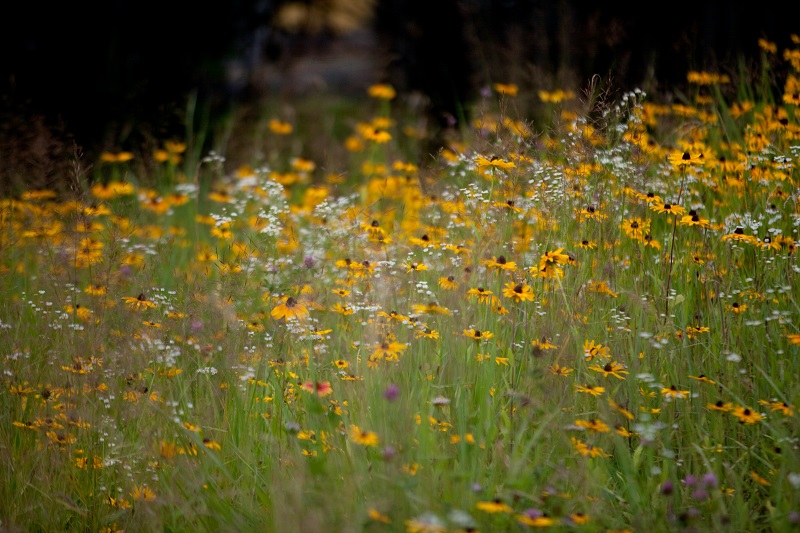
Photo credit: Marcus Neto on Unsplash
Deer Creek Seed Wildflower Mixes
Deer Creek Seed offers a handful of specially blended wildflower mixes, each with a specific purpose in mind. Whether you are hoping to attract pollinators, increase native plant populations, or fill a shady spot in your garden, we have something to meet your needs!
Midwestern Wildflower Mix
Midwestern Wildflower Mix is a long-blooming blend of species chosen for their spectacular flowers. This mix contains approximately 50% annuals and 50% perennial species and tolerates extreme cold and rugged winter conditions.
Native Wildflower & Forbs Mix
Native Wildflower and Forbs Mix is a unique blend of wildflowers and upland or lowland native grasses for the ultimate native restoration planting. Utilize this diverse array of species to restore the land, provide habitat and food source for beneficial pollinators, or plant for the beauty alone!
Low Grow Wildflower Mix
Low Grow Wildflower Mix is a blend of species chosen for their natural beauty, long flowering periods, and low-growing characteristics. This mix contains approximately 70% annual and 30% perennial flower seeds and grows to 18-24” under normal growing conditions. It is ideal for areas where beautiful, shorter flowers are wanted.
Deer Proof Wildflower Mix
Deer Proof Wildflower Mix contains wildflower species relatively unpalatable to deer. The mix comprises approximately 34% perennial species and 66% annual species that reseed for many seasons. Plants grow between 18 and 48” tall.
All Perennial Wildflower Mix
All Perennial Wildflower Mix is a blend of perennial species that will provide a colorful stand for many years. Some flowering may occur in the first year when planted in the spring, although most start blooming the following spring.
Honey Bee & Pollinator Wildflower Mix
Honey Bee & Pollinator Wildflower Mix is packed with a combination of annual and perennial species specially selected for their pollinator attraction and friendliness. These nectar-rich wildflowers attract bumblebees, birds, and butterflies, providing season-long food. This mix is neonicotinoid-free and can be planted in all types of soils across the United States.
North American Shade Wildflower Mix
North American Shade Wildflower Mix was formulated to grow well in low-light areas and does best in spots that receive part sun and part shade throughout the day. This mix contains approximately 55% annuals and 45% perennials.
Additional Resources
- The Natural Resource Conversation Service explains how wildflowers help benefit agricultural operations and why they’re helping farmers incorporate them into their lands.
- Interested in planting a wildflower meadow for pollinators? Let the University of New Hampshire walk you through everything you need to know.
- If you’re planting and unsure of your area's last spring frost date, you can plug your zip code into the frost dates calculator at The Old Farmer’s Almanac.
- University of New Hampshire Extension walks you through the steps of turning your lawn into a beautiful wildflower meadow, starting from seed.


